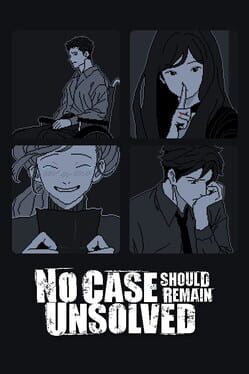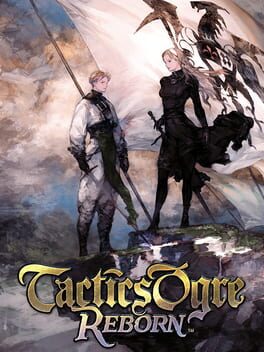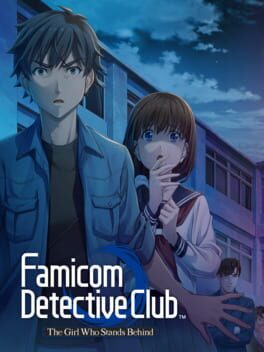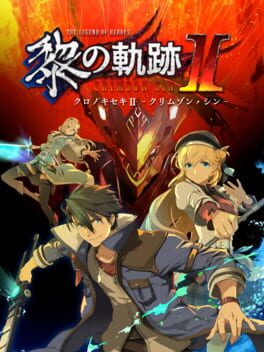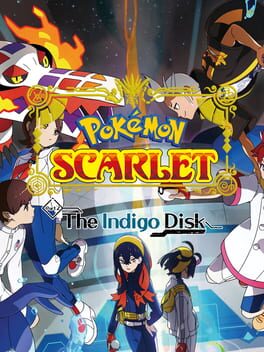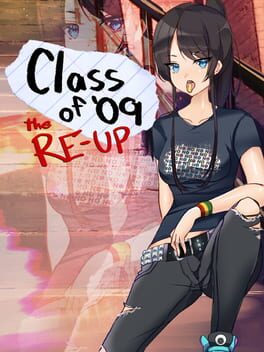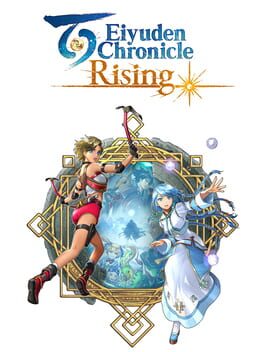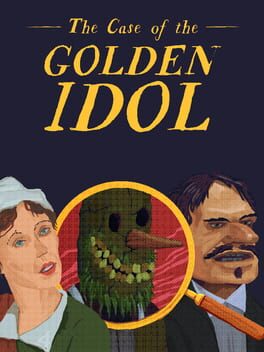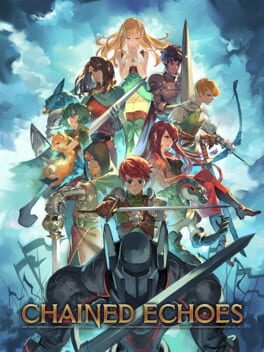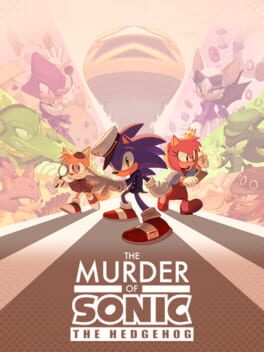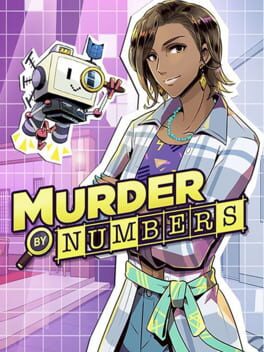falsenine
it's a little ironic that What Remains of Edith Finch is decried for being a walking sim when it makes use of its medium impeccably when it comes to telling its story. i would even go so far as to say it conveys a kind of story that can only be told properly at all in the form of a game.
i don't have a lot to say right now because it packs a lot into a <5 hr game and there's plenty of aspects of it that are still marinating in my head. only thing i really wanted to make a point of is that it's an 8.5/10 and not an 8 [or 9]. not too bothered about the 5 star scoring system most of the time but some impulse in my brain won't accept this game as anything other than an 8.5. i'd love it if we could just Pitchfork it and start giving 8.7s, 5.3s and shit but alas. then again "actual video game critics" can't even be trusted with a review scale so perhaps it's too much power for an average backlogged user like myself to produce any real meaning from heh.
i don't have a lot to say right now because it packs a lot into a <5 hr game and there's plenty of aspects of it that are still marinating in my head. only thing i really wanted to make a point of is that it's an 8.5/10 and not an 8 [or 9]. not too bothered about the 5 star scoring system most of the time but some impulse in my brain won't accept this game as anything other than an 8.5. i'd love it if we could just Pitchfork it and start giving 8.7s, 5.3s and shit but alas. then again "actual video game critics" can't even be trusted with a review scale so perhaps it's too much power for an average backlogged user like myself to produce any real meaning from heh.
No Case Should Remain unsolved is a fantastic adventure game that runs at about 3~ hours but never understays its welcome. Abstract, narrative-based indie games have had their time in the sun in the past decade or so but No Case Should Remain Unsolved nonetheless manages to keep things fresh with how it intuitively dispenses its narrative and intertwines it with the gameplay. The protagonist is essentially piecing together memories of a cold case about a child kidnapping that appear in the form of instant messages. The entire game takes place within this screen, more or less, but there's a very satisfying quality of working out the "how" and piecing together related fragments of the messages, while drawing inferences to guide you to the next piece of information that needs to be looked at. It's really something you have to try for yourself but it's immensely enjoyable and hits the sweet spot of "challenging, yet fair".
Hard to go to deep into the writing without spoiling anything (which I don't want to do), but it's excellent and the story wraps up very nicely.
Hard to go to deep into the writing without spoiling anything (which I don't want to do), but it's excellent and the story wraps up very nicely.
2022
2022
last writeup was pretty long so i'm just gonna riff on this one
-finally got to play this remake of one of my favorite adv games of all time (Famicom Tantei Club II for the SFC), which itself is a remake of the original Famicom Tantei Club II for the Famicom Disk System
-Definitely a big nostalgia trip to relive the game again and all the stuff I love is more or less still there, however...
-It's hard to be objective in the remake of a game that is detective fiction when you know "whodunit" since that luster is lost but ultimately the biggest flaw for me is the presentation/atmosphere. I know this is the most base criticism ever for remakes of a game, especially adventure games, but it's true in this case.
-A lot of things just feel really sterile. The SFC Version of Famicom Tantei (Detective) Club II absolutely fucking nailed the atmosphere to the point where the idea a gruesome local murder casting a foreboding shroud on everyone's peaceful daily lives is communicated perfectly. Examples: http://www.hardcoregaming101.net/wp-content/uploads/2021/05/https-lh5-googleusercontent-com-dywf0axde55eakl9.png http://www.hardcoregaming101.net/wp-content/uploads/2021/05/https-lh3-googleusercontent-com-7lc0dyou9ru9e7gi.png
-There's just this incredible aesthetic that's not quite dreary because there's still a semblance of that cheerful world before the murder, but it's fractured somehow. If I had to use a word to describe it, it would be "wistful".
-This aesthetic honestly makes or breaks a lot of what the game wants to get across. The remake by MAGES opts for a more modern look; the artstyle feels like an imitation of the old-school aesthetic with modern digital art and rendering techniques, and the characters are expressive, but ultimately it just isn't the same. Everything's a bit too bright and cheery or certain scenes lack nuance or gravitas in comparison to the original (the reveal of the culprit is probably the worst case of this, in the version I played it's one of the greatest scenes in any adv or any game i've played period, but here it falls a bit flat, irrespective of me knowing that it was coming)
-It's hard to say if MAGES would want to reproduce the aesthetic of the SFC version in some form, or even if they could since it's tied to a certain time and a place, but I think everything just feels a bit lacking. It's not tense, it's not hard-boiled and there is no feeling of suspense or urgency. Returning to Utsugi's office at the end of every chapter gave a sense of respite when I played the SFC version, you just felt like you were safe when the killer was out there and you actually /needed/ to mull things over, but in this remake it just feels too routine.
-I think MAGES had fun with it and were probably psyched to get the chance to remake such a legendary game in the canon of japanese adventure games but it's just a bit unfortunate that a remake that is faithful in so many other areas misses the mark in arguably the most important one
-i'm strangely alright with the design choice to reproduce the admittedly very clunky investigation mechanics of the original games, which often amount to brute forcing dialogue options until you get a bread crumb of info. like the aesthetic of the first remake (but in the inverse) it's a product of a time and a place and i think you risk garnering a lot of bad will if you touch it at all, even if you nail it in a redesign, so i understand why it was kept. i think the core idea of needing to make inferences and interact with scenes, scenarios and characters is a good core concept even if the execution in these games (and in this remake) is not the greatest. i knew what i signed up for and i'm fine with it.
-Takeshi Abo's arrangements of the OST are superb and I'm glad a legend like him got the opportunity to be involved
-finally got to play this remake of one of my favorite adv games of all time (Famicom Tantei Club II for the SFC), which itself is a remake of the original Famicom Tantei Club II for the Famicom Disk System
-Definitely a big nostalgia trip to relive the game again and all the stuff I love is more or less still there, however...
-It's hard to be objective in the remake of a game that is detective fiction when you know "whodunit" since that luster is lost but ultimately the biggest flaw for me is the presentation/atmosphere. I know this is the most base criticism ever for remakes of a game, especially adventure games, but it's true in this case.
-A lot of things just feel really sterile. The SFC Version of Famicom Tantei (Detective) Club II absolutely fucking nailed the atmosphere to the point where the idea a gruesome local murder casting a foreboding shroud on everyone's peaceful daily lives is communicated perfectly. Examples: http://www.hardcoregaming101.net/wp-content/uploads/2021/05/https-lh5-googleusercontent-com-dywf0axde55eakl9.png http://www.hardcoregaming101.net/wp-content/uploads/2021/05/https-lh3-googleusercontent-com-7lc0dyou9ru9e7gi.png
-There's just this incredible aesthetic that's not quite dreary because there's still a semblance of that cheerful world before the murder, but it's fractured somehow. If I had to use a word to describe it, it would be "wistful".
-This aesthetic honestly makes or breaks a lot of what the game wants to get across. The remake by MAGES opts for a more modern look; the artstyle feels like an imitation of the old-school aesthetic with modern digital art and rendering techniques, and the characters are expressive, but ultimately it just isn't the same. Everything's a bit too bright and cheery or certain scenes lack nuance or gravitas in comparison to the original (the reveal of the culprit is probably the worst case of this, in the version I played it's one of the greatest scenes in any adv or any game i've played period, but here it falls a bit flat, irrespective of me knowing that it was coming)
-It's hard to say if MAGES would want to reproduce the aesthetic of the SFC version in some form, or even if they could since it's tied to a certain time and a place, but I think everything just feels a bit lacking. It's not tense, it's not hard-boiled and there is no feeling of suspense or urgency. Returning to Utsugi's office at the end of every chapter gave a sense of respite when I played the SFC version, you just felt like you were safe when the killer was out there and you actually /needed/ to mull things over, but in this remake it just feels too routine.
-I think MAGES had fun with it and were probably psyched to get the chance to remake such a legendary game in the canon of japanese adventure games but it's just a bit unfortunate that a remake that is faithful in so many other areas misses the mark in arguably the most important one
-i'm strangely alright with the design choice to reproduce the admittedly very clunky investigation mechanics of the original games, which often amount to brute forcing dialogue options until you get a bread crumb of info. like the aesthetic of the first remake (but in the inverse) it's a product of a time and a place and i think you risk garnering a lot of bad will if you touch it at all, even if you nail it in a redesign, so i understand why it was kept. i think the core idea of needing to make inferences and interact with scenes, scenarios and characters is a good core concept even if the execution in these games (and in this remake) is not the greatest. i knew what i signed up for and i'm fine with it.
-Takeshi Abo's arrangements of the OST are superb and I'm glad a legend like him got the opportunity to be involved
This review contains spoilers
A legend of too many heroes.
The Calvard Arc (or Kuro/Daybreak) should have been a watershed moment in the Kiseki series. It was billed as the opening act of the next major stage in the Kiseki series’ narrative, which would introduce the then-unknown eastern half of the Zemurian Continent, with the Calvard Republic serving as the bridge between west and east. Falcom’s additional promise of a darker storyline that tied in with the protagonist, Van Arkride’s occupation as a “fixer” who serves both the general public and the underworld also garnered a lot of interest. And these promises could not have come at a better time - the Cold Steel saga had started to become drawn out and predictable, and it felt like the long-running Kiseki series was in dire need of new ideas in order to continue offering scenarios that truly resonated with its players. The sphere of JRPGs in general also clamored for innovation - the genre was in a second golden age with a plethora of new releases coming out over the past decade, but a saturation of releases begets an audience who is no longer easily impressed, and demands something novel and exciting.
The Calvard Republic’s basic premise had long shown a lot of promise with what was teased via allusions and side stories within previous entries in the Kiseki series, and the fanbase held out hope for what would be an incredible arc when its story would finally be told. Tales of corrupt politicians, ruthless mafia families, ethnic tensions over mass immigration, and even magicians conjured up a vignette of an extraordinary country in line with what Kiseki fans come to expect: a Republic with a clean outer image of being built on liberty and democracy following its revolution, yet harboring a seedy underbelly of corruption, vice and strife that may come to the fore at any moment.
And yet, with all this going for it, the Calvard arc has disappointingly given us more of the same. It is the manifestation of a company too afraid to commit to anything in terms of narrative or characterization outside of the tired scenario of a powerful ensemble cast of heroes taking down an antagonist who is either irredeemably evil or manipulated by an outside force.
Kuro no Kiseki II does have a lot going for it despite its faults: the gameplay is phenomenal and its battle system is among the best I’ve experienced in any RPG. Encounters feel high-tempo and exciting whether in the action-based field battles or the turn-based command battles, with the transition between the two being incredibly fluid thanks to the addition of the “EX Chain'' mechanic. Falcom is often known for following, but in terms of Kuro’s battle mechanics they are very much leading the way. The new Marchen Garden is a neat side dungeon to level up your characters and break up the gameplay loop, while offering good rewards for the player going through the trouble of completing its stages (which are themselves not too grindy, unless you want them to be). Aside from that, you get the classic Falcom bang for your buck in the form of a 100-hour campaign and a rich amount of content to enjoy. The cast is still great and still my favorite in the entire series and some of the peripheral party members from the first game take a more active role in the story. That said…
The core of an RPG series like Kiseki has always been its story and characters, however. And no matter how appealing the outer coat of paint looks, the game’s writing is among the most hollow and disappointing in any Kiseki game.
I’ll start by saying time travel mechanic is not the villain here; it initially introduced a sense of stakes not seen in a while, and the despair upon seeing a bad end tends to at least offset the feeling of having an all-powerful ability to reset time (a technique used to great effect in works like Radiant Historia or Re:zero). Where Kuro no Kiseki II really fails is in the actual events of the story. The biggest gripe I’ve had with recent Kiseki games is that many of the antagonists lack proper motivation or characterization, and mainly get shunted into being boss fights at the plot’s convenience rather than because of their own convictions/actions leading to a clash of ideals with the protagonist.
From the outset, the Calvard arc promised a “morally gray story” where enemies can become allies and vice-versa due to the nature of Van’s work, but what it really delivered was a story where allies can become boss fights, not enemies, because all of the potential groups Van can choose to align himself with actually just exist within the same web of “good guys”. There is no real chance that someone like Lucrezia or Walter will ever seriously turn their sword on you, and a lot of doubt has been cast as to whether Ouroboros itself will ever be a proper antagonist again; a true shame considering how compelling they were to fight against in Trails in the Sky.
Worse yet, Kuro no Kiseki and Kuro no Kiseki II actually continue the shallow polarization between “hero” and “villain” that plagued the latter half of the Cold Steel Arc. Characters in this series are now potentially allies (regardless of affiliation, be it to a literal mafia clan, a jaeger corps, or Ouroboros), or outright villains. I have to use the word “villains” rather than “antagonists” because Kiseki itself now draws a parallel between the two. Villains are now irredeemably evil characters with vague, mysterious and/or sadistic goals such as Garden Master and Gerard Dantes, where antagonists can be anyone because the games need boss fights, after all! More often than not, antagonists are manipulated allies, or merely characters in Van’s “web of connections” playing villain for a chapter, before going back to being your friend.
This is shown in Kuro no Kiseki II once again using the incredibly shallow plot device of mind control in its infamous and long-winded Chapter 3, which features characters who would normally be allies going berserk after being shown a vision of a false worldline where some great injustice was inflicted upon them, to the point of fighting against the protagonist or causing a major incident. The absolute worst part of this is that these events are all undone by the time travel mechanic, and as a result, neither advance the game’s narrative nor contribute to any character progression.
The game touches on there being a reason for this; that giving into the false visions (or “Reality Erosions”, as the game calls them) is indicative of inner weakness, which Kuro II goes on to tie into the idea of this weakness being representative of the idea of original sin. In this same vein, it’s stated that our inherent weakness is indeed what makes us human, and we must work to overcome it. This take seems poignant and reasonable enough in and of itself, and yet it still feels so shallow. Why? Well, because that’s the same justification we got for the Erebonian Curse in Cold Steel 4, which felt just as hollow and lacking in stakes now as it did then. Human weakness takes many forms, but has always Kiseki cut its teeth telling human stories about clashes of ideals. Consider the motivations of Loewe in Trails in the Sky, Arios in Trails to Azure, Crow in Trails of Cold Steel 2, and contrast it with the reality we have today, where mind control is the only way for Falcom to give us antagonists that aren’t comically evil. It certainly feels cheap to talk about “weakness” when it’s used to hand wave situations where characters are almost removed of their free will entirely so they can serve as antagonists and boss fights for a chapter or two. Characters in Kiseki from Rean Schwarzer to Aaron Wei’s drunkard, deadbeat father show some form of weakness, but it has value in each of these contexts because it’s part of a wider personal struggle. To apply this same criteria to a situation involving what is essentially mind control just feels like a poor attempt to convince players that these sequences are deeper than they appear, and that they don’t really fall flat in terms of immersion and gravitas.
It’s a trend that’s been around for a couple games now but Kuro II really drove the point home by executing it in a way that’s so poor that it’s impossible to ignore any longer. Needless to say, Kiseki as a series is much worse off for using this plot device, and the Calvard Arc itself, for all its initial promise, is in a very difficult spot if it is to establish itself as being a series of great RPGs.
------
Appreciate you reading if you made it to the end, big ups to the guys who worked on the EN patch as well; stuff like this really benefits the community at-large.
The Calvard Arc (or Kuro/Daybreak) should have been a watershed moment in the Kiseki series. It was billed as the opening act of the next major stage in the Kiseki series’ narrative, which would introduce the then-unknown eastern half of the Zemurian Continent, with the Calvard Republic serving as the bridge between west and east. Falcom’s additional promise of a darker storyline that tied in with the protagonist, Van Arkride’s occupation as a “fixer” who serves both the general public and the underworld also garnered a lot of interest. And these promises could not have come at a better time - the Cold Steel saga had started to become drawn out and predictable, and it felt like the long-running Kiseki series was in dire need of new ideas in order to continue offering scenarios that truly resonated with its players. The sphere of JRPGs in general also clamored for innovation - the genre was in a second golden age with a plethora of new releases coming out over the past decade, but a saturation of releases begets an audience who is no longer easily impressed, and demands something novel and exciting.
The Calvard Republic’s basic premise had long shown a lot of promise with what was teased via allusions and side stories within previous entries in the Kiseki series, and the fanbase held out hope for what would be an incredible arc when its story would finally be told. Tales of corrupt politicians, ruthless mafia families, ethnic tensions over mass immigration, and even magicians conjured up a vignette of an extraordinary country in line with what Kiseki fans come to expect: a Republic with a clean outer image of being built on liberty and democracy following its revolution, yet harboring a seedy underbelly of corruption, vice and strife that may come to the fore at any moment.
And yet, with all this going for it, the Calvard arc has disappointingly given us more of the same. It is the manifestation of a company too afraid to commit to anything in terms of narrative or characterization outside of the tired scenario of a powerful ensemble cast of heroes taking down an antagonist who is either irredeemably evil or manipulated by an outside force.
Kuro no Kiseki II does have a lot going for it despite its faults: the gameplay is phenomenal and its battle system is among the best I’ve experienced in any RPG. Encounters feel high-tempo and exciting whether in the action-based field battles or the turn-based command battles, with the transition between the two being incredibly fluid thanks to the addition of the “EX Chain'' mechanic. Falcom is often known for following, but in terms of Kuro’s battle mechanics they are very much leading the way. The new Marchen Garden is a neat side dungeon to level up your characters and break up the gameplay loop, while offering good rewards for the player going through the trouble of completing its stages (which are themselves not too grindy, unless you want them to be). Aside from that, you get the classic Falcom bang for your buck in the form of a 100-hour campaign and a rich amount of content to enjoy. The cast is still great and still my favorite in the entire series and some of the peripheral party members from the first game take a more active role in the story. That said…
The core of an RPG series like Kiseki has always been its story and characters, however. And no matter how appealing the outer coat of paint looks, the game’s writing is among the most hollow and disappointing in any Kiseki game.
I’ll start by saying time travel mechanic is not the villain here; it initially introduced a sense of stakes not seen in a while, and the despair upon seeing a bad end tends to at least offset the feeling of having an all-powerful ability to reset time (a technique used to great effect in works like Radiant Historia or Re:zero). Where Kuro no Kiseki II really fails is in the actual events of the story. The biggest gripe I’ve had with recent Kiseki games is that many of the antagonists lack proper motivation or characterization, and mainly get shunted into being boss fights at the plot’s convenience rather than because of their own convictions/actions leading to a clash of ideals with the protagonist.
From the outset, the Calvard arc promised a “morally gray story” where enemies can become allies and vice-versa due to the nature of Van’s work, but what it really delivered was a story where allies can become boss fights, not enemies, because all of the potential groups Van can choose to align himself with actually just exist within the same web of “good guys”. There is no real chance that someone like Lucrezia or Walter will ever seriously turn their sword on you, and a lot of doubt has been cast as to whether Ouroboros itself will ever be a proper antagonist again; a true shame considering how compelling they were to fight against in Trails in the Sky.
Worse yet, Kuro no Kiseki and Kuro no Kiseki II actually continue the shallow polarization between “hero” and “villain” that plagued the latter half of the Cold Steel Arc. Characters in this series are now potentially allies (regardless of affiliation, be it to a literal mafia clan, a jaeger corps, or Ouroboros), or outright villains. I have to use the word “villains” rather than “antagonists” because Kiseki itself now draws a parallel between the two. Villains are now irredeemably evil characters with vague, mysterious and/or sadistic goals such as Garden Master and Gerard Dantes, where antagonists can be anyone because the games need boss fights, after all! More often than not, antagonists are manipulated allies, or merely characters in Van’s “web of connections” playing villain for a chapter, before going back to being your friend.
This is shown in Kuro no Kiseki II once again using the incredibly shallow plot device of mind control in its infamous and long-winded Chapter 3, which features characters who would normally be allies going berserk after being shown a vision of a false worldline where some great injustice was inflicted upon them, to the point of fighting against the protagonist or causing a major incident. The absolute worst part of this is that these events are all undone by the time travel mechanic, and as a result, neither advance the game’s narrative nor contribute to any character progression.
The game touches on there being a reason for this; that giving into the false visions (or “Reality Erosions”, as the game calls them) is indicative of inner weakness, which Kuro II goes on to tie into the idea of this weakness being representative of the idea of original sin. In this same vein, it’s stated that our inherent weakness is indeed what makes us human, and we must work to overcome it. This take seems poignant and reasonable enough in and of itself, and yet it still feels so shallow. Why? Well, because that’s the same justification we got for the Erebonian Curse in Cold Steel 4, which felt just as hollow and lacking in stakes now as it did then. Human weakness takes many forms, but has always Kiseki cut its teeth telling human stories about clashes of ideals. Consider the motivations of Loewe in Trails in the Sky, Arios in Trails to Azure, Crow in Trails of Cold Steel 2, and contrast it with the reality we have today, where mind control is the only way for Falcom to give us antagonists that aren’t comically evil. It certainly feels cheap to talk about “weakness” when it’s used to hand wave situations where characters are almost removed of their free will entirely so they can serve as antagonists and boss fights for a chapter or two. Characters in Kiseki from Rean Schwarzer to Aaron Wei’s drunkard, deadbeat father show some form of weakness, but it has value in each of these contexts because it’s part of a wider personal struggle. To apply this same criteria to a situation involving what is essentially mind control just feels like a poor attempt to convince players that these sequences are deeper than they appear, and that they don’t really fall flat in terms of immersion and gravitas.
It’s a trend that’s been around for a couple games now but Kuro II really drove the point home by executing it in a way that’s so poor that it’s impossible to ignore any longer. Needless to say, Kiseki as a series is much worse off for using this plot device, and the Calvard Arc itself, for all its initial promise, is in a very difficult spot if it is to establish itself as being a series of great RPGs.
------
Appreciate you reading if you made it to the end, big ups to the guys who worked on the EN patch as well; stuff like this really benefits the community at-large.
I bought this game on sale out of interest for its sister title, Eiyuden Chronicle: Hundred Heroes, which is due to be released next year, and came out pleasantly surprised. The game actually plays fairly well for a 2D action RPG although everything doesn't really click until you've unlocked an appreciable amount of upgrades allowing your characters to move quickly and fluidly compared to their more sluggish pace at the start of the game. This design decision is perhaps a case of underplaying your hand too much for the sake of balance, something that could potentially lose players when it could be hooking them. The game is also a bit on the easy side, which is a shame because it doesn't have to be.
The cast of characters themselves are where the game really shines and CJ in particular is a great protagonist who I'm looking forward to seeing more of in Hundred Heroes. At the same time there really aren't too many truly involved figures in the story besides the main cast; though it's fine to keep an action RPG light in plot as well as toeing the line of showing off just enough to get players excited for Hundred Heroes without giving away too much, I did feel that there could have been a bit more worldbuilding outside of the bits and pieces they give you, as the main plot feels remarkably isolated from everything else that is supposedly going on.
The artstyle and OST are not impressive but they get the job done and seem to be more refined in Hundred Heroes judging by the trailers that have been shown (still, one would imagine you'd want a spinoff game bearing the same name as your headline release to hit certain standards of quality control regardless). Aside from that, my only real other gripe is the amount of largely pointless fetch quests [over 160], which are sterile and formulaic to the point that they serve little purpose other than padding out playtime. 30, 20 or even 10 quests with a more meaningful impact in regards to the story or characters would have produced more value. All in all though, you do get a decent amount of content and despite the budget nature of the release, you can feel a desire from the team to put out something fun and playable when they could have easily phoned in the release and still sold copies due to the hype surrounding Eiyuden Chronicle's status as a successor to the beloved Suikoden series.
The cast of characters themselves are where the game really shines and CJ in particular is a great protagonist who I'm looking forward to seeing more of in Hundred Heroes. At the same time there really aren't too many truly involved figures in the story besides the main cast; though it's fine to keep an action RPG light in plot as well as toeing the line of showing off just enough to get players excited for Hundred Heroes without giving away too much, I did feel that there could have been a bit more worldbuilding outside of the bits and pieces they give you, as the main plot feels remarkably isolated from everything else that is supposedly going on.
The artstyle and OST are not impressive but they get the job done and seem to be more refined in Hundred Heroes judging by the trailers that have been shown (still, one would imagine you'd want a spinoff game bearing the same name as your headline release to hit certain standards of quality control regardless). Aside from that, my only real other gripe is the amount of largely pointless fetch quests [over 160], which are sterile and formulaic to the point that they serve little purpose other than padding out playtime. 30, 20 or even 10 quests with a more meaningful impact in regards to the story or characters would have produced more value. All in all though, you do get a decent amount of content and despite the budget nature of the release, you can feel a desire from the team to put out something fun and playable when they could have easily phoned in the release and still sold copies due to the hype surrounding Eiyuden Chronicle's status as a successor to the beloved Suikoden series.
2022
What a phenomenal game.
Honestly I had a whole review written but I can't say everything I want to say about this game in a concise manner, because there is simply too much to say.
Chained Echoes is a masterclass of modern JRPG game design; everything in this game is a constant dopamine rush, from the battles, to the character progression, to the sidequests. Characters are not lazily tacked on as "Warrior, White Mage, Black Mage, Thief" even if they do ultimately fall into these archetypes. Instead, each of the party members is built with such care that they all feel incredibly fun and responsive to play with. The party members not only have kits that integrate with the kits of other party members, but kits that integrate with the their own builds, all in a game with plenty of skills and build options that allow for a plethora of fun combos that can be discovered and exploited.
It's a game by a developer who is thinking way, way outside of the box, and will end up pushing the JRPG genre forward as a whole because of it, because nothing in Chained Echoes ends up feeling untraditional or arbitrary even if they're a product of a game design leap-of-faith. Everything in this game is simply the fruit of Matthias Linda and his team asking "why?" in regards to genre mainstays, and then coming up with their own answer.
Aside from the gameplay, the graphics are gorgeous and truly bring out the merits of pixel art as an art form rather than merely an aesthetic. The characters are likable, quirky and well-developed for the most part and get a good amount of screentime and interaction to really make them memorable as a party. The plot is mostly well-written, and although it's no doubt full of classic RPG tropes, it does manage to separate itself and stand as its own thing in telling a heartfelt story about the nature of humanity, while introducing an interesting dynamic between the storyline and lore in regards to how the world and afterlife are handled.
All in all, I can't recommend this game to JRPG heads enough. A lot of indie RPGs like to bill themselves as being "the next Chrono Trigger/Earthbound/etc" but Chained Echoes is Chained Echoes. Though it clearly has inspirations from the games of the golden age in the 90s all the same, it's a game that has built on the foundation that they provided rather than being content to ride on their coattails.
Honestly I had a whole review written but I can't say everything I want to say about this game in a concise manner, because there is simply too much to say.
Chained Echoes is a masterclass of modern JRPG game design; everything in this game is a constant dopamine rush, from the battles, to the character progression, to the sidequests. Characters are not lazily tacked on as "Warrior, White Mage, Black Mage, Thief" even if they do ultimately fall into these archetypes. Instead, each of the party members is built with such care that they all feel incredibly fun and responsive to play with. The party members not only have kits that integrate with the kits of other party members, but kits that integrate with the their own builds, all in a game with plenty of skills and build options that allow for a plethora of fun combos that can be discovered and exploited.
It's a game by a developer who is thinking way, way outside of the box, and will end up pushing the JRPG genre forward as a whole because of it, because nothing in Chained Echoes ends up feeling untraditional or arbitrary even if they're a product of a game design leap-of-faith. Everything in this game is simply the fruit of Matthias Linda and his team asking "why?" in regards to genre mainstays, and then coming up with their own answer.
Aside from the gameplay, the graphics are gorgeous and truly bring out the merits of pixel art as an art form rather than merely an aesthetic. The characters are likable, quirky and well-developed for the most part and get a good amount of screentime and interaction to really make them memorable as a party. The plot is mostly well-written, and although it's no doubt full of classic RPG tropes, it does manage to separate itself and stand as its own thing in telling a heartfelt story about the nature of humanity, while introducing an interesting dynamic between the storyline and lore in regards to how the world and afterlife are handled.
All in all, I can't recommend this game to JRPG heads enough. A lot of indie RPGs like to bill themselves as being "the next Chrono Trigger/Earthbound/etc" but Chained Echoes is Chained Echoes. Though it clearly has inspirations from the games of the golden age in the 90s all the same, it's a game that has built on the foundation that they provided rather than being content to ride on their coattails.
2020
Murder by Numbers nice game with a cute core concept but it suffers from major game design issues in regards to the sheer amount of nonogram puzzles that it throws at you, to the point where I can only recommend it in good faith to true enthusiasts. The puzzles themselves are well thought out and actually relate to the gameplay and narrative in a clever way, but the game throws far too many of them at the player at far too regular intervals for it to ever be enjoyable from start to finish; I went from loving nonograms in Case 1 to never wanting to see them again in Case 4. There are occasional timed sequences with shorter nonograms but these do not do enough to shake up the gameplay experience. Unlike say, Professor Layton, Murder by Numbers does not give enough agency to the player in terms of when and where they can encounter puzzles, nor do you get enough variety in puzzles to keep you engaged as a casual solver.
Aside from the puzzles, the game itself is pretty decent. Masakazu Sugimori provided an excellent soundtrack and the main characters, Honor and Scout are both pretty likable and unique protagonists as far as detective stories go. The game has some cheesy early millenial humor that can be hit or miss, but when it does land, it lands well. The cases themselves are a bit lacking - they're not exciting 'impossible' crimes like you'd see in traditional detective fiction (or media that takes after it, ie Ace Attorney), nor are there any truly engaging whodunit narratives. Really, the game's cases are pretty cut-and-dry and closer to Scooby Doo mysteries rather than anything more meaningful. I think there's a lot of potential in the game despite its flaws, it clearly feels like a passion project, but as things stand it's pretty lacking.
Aside from the puzzles, the game itself is pretty decent. Masakazu Sugimori provided an excellent soundtrack and the main characters, Honor and Scout are both pretty likable and unique protagonists as far as detective stories go. The game has some cheesy early millenial humor that can be hit or miss, but when it does land, it lands well. The cases themselves are a bit lacking - they're not exciting 'impossible' crimes like you'd see in traditional detective fiction (or media that takes after it, ie Ace Attorney), nor are there any truly engaging whodunit narratives. Really, the game's cases are pretty cut-and-dry and closer to Scooby Doo mysteries rather than anything more meaningful. I think there's a lot of potential in the game despite its flaws, it clearly feels like a passion project, but as things stand it's pretty lacking.
2015

